Screened-in porches combine the comforts of indoor living with the freshness of the outdoors, offering versatile retreats that can be tailored for all seasons and uses. By integrating flexible screening systems, durable all-weather materials, and thoughtful décor accents, homeowners can create multifunctional spaces for dining, relaxing, or entertaining. Budget-friendly strategies—like building off an existing patio or timing construction for the off-season—help control costs, while features such as retractable Phantom Screens, extra-deep cushions, and layered textiles enhance comfort and usability. From dramatic high-end finishes to DIY porch builds, these twenty ideas will inspire you to transform any screened porch into your favorite room in the house.
1. Give Yourself Some Flexibility
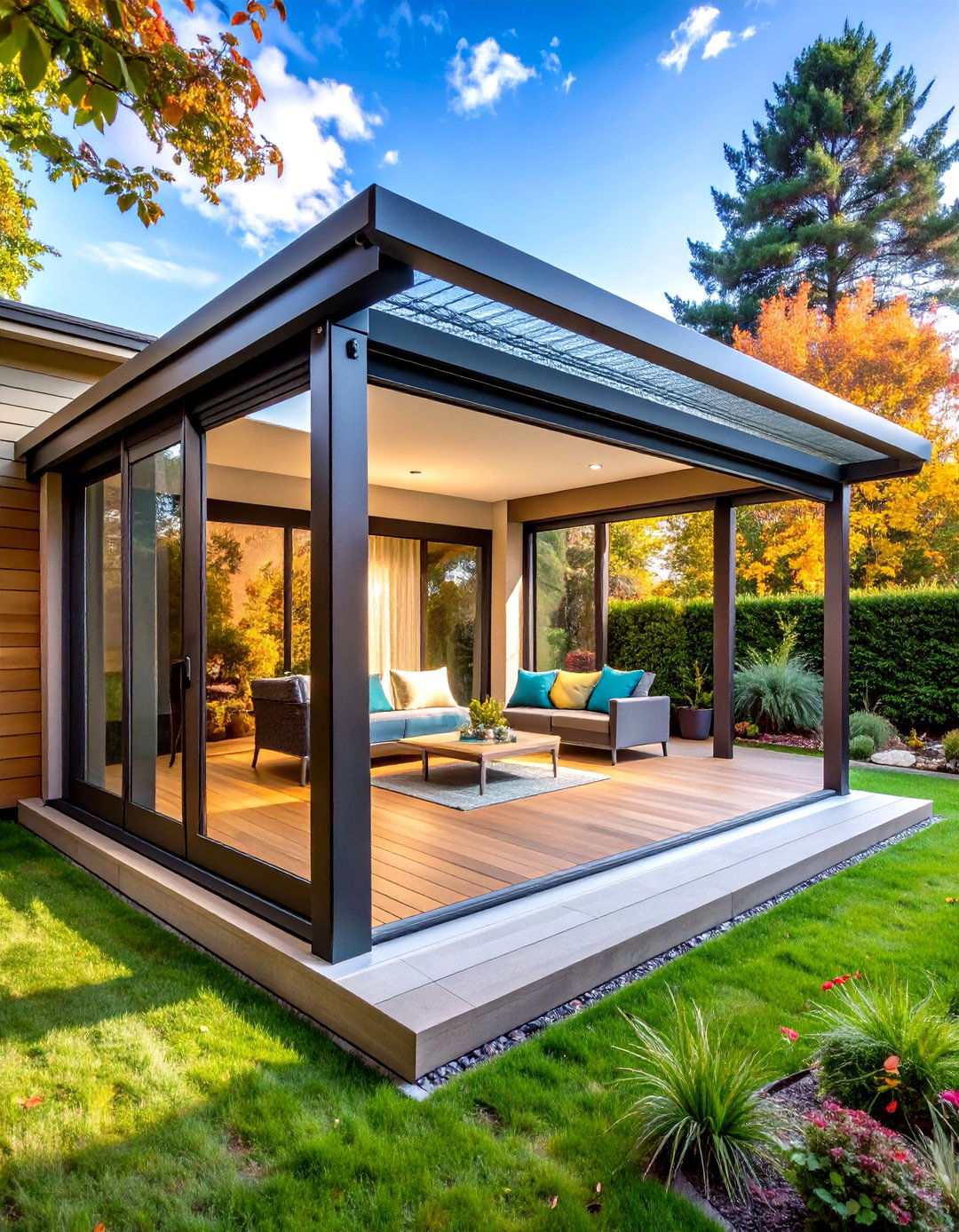
One of the most transformative features for a screened-in porch is a retractable screen system, such as Phantom Screens, which can be easily lowered to protect against rain, wind, and insects or quietly raised to expose your outdoor vistas. This approach allows homeowners to customize their porch’s level of enclosure at the touch of a button or the pull of a lever, creating an adaptable space for any weather condition. By incorporating motorized or manual retractable screens, you maintain a clean, uncluttered façade when the screens are not in use, while still benefiting from discreet overhead housing. These flexible screening solutions integrate seamlessly into a porch’s architecture, preserving sightlines and maximizing natural light. Professional installation ensures proper tension and fit, extending the lifespan of the screens and reducing maintenance needs
2. Make It an All-Day Destination
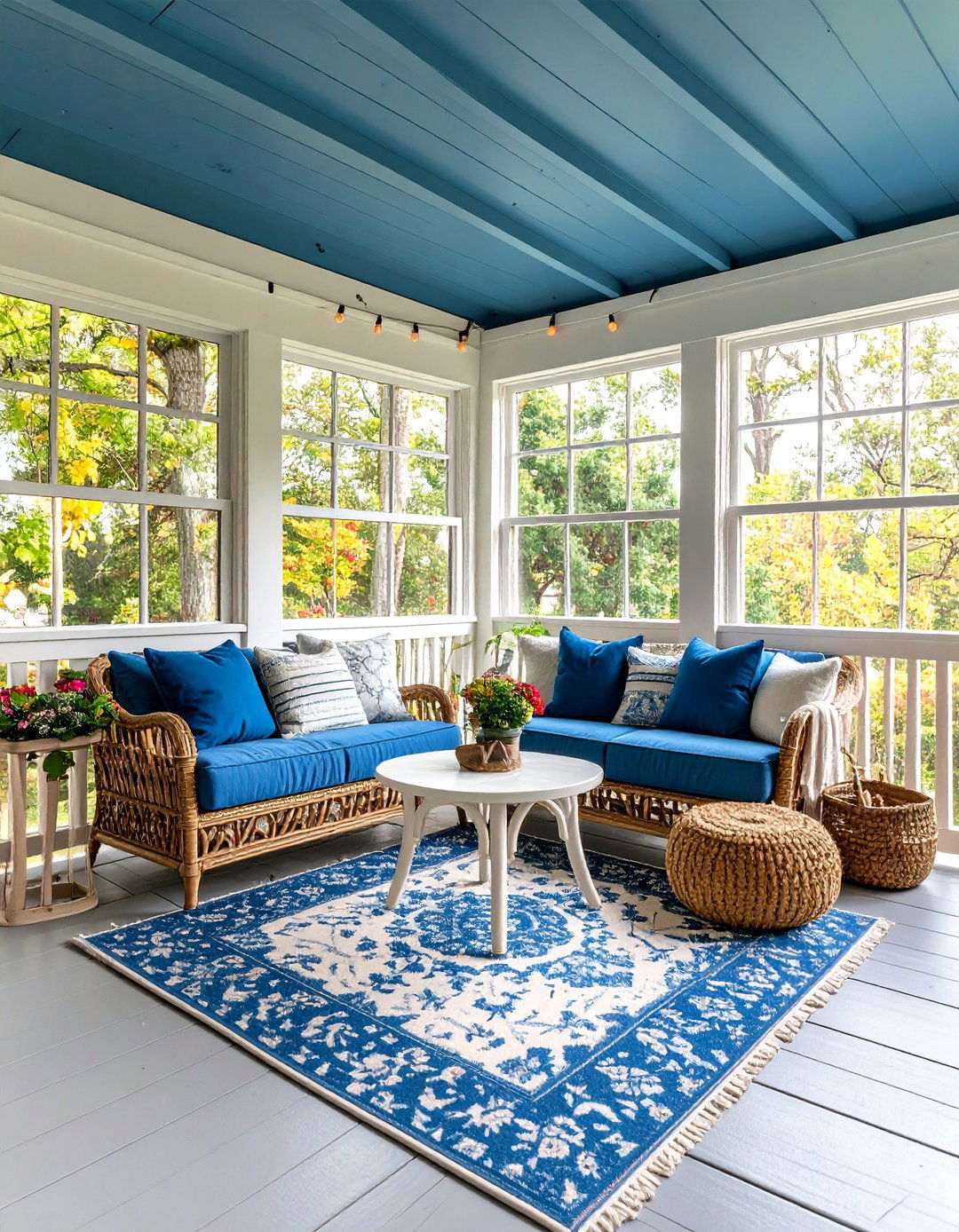
Transforming a screened-in porch into an all-day destination involves layering durable furnishings and versatile accents that work from sunrise coffee to sunset cocktails. Keeping design elements like a haint-blue ceiling harkens back to Southern porch traditions while visually expanding the space, and swapping out tiles or adding a scalloped indoor-outdoor rug ties the room together. A petite dining set or movable bistro table invites breakfasts, work-from-home lunches, and evening dinners alike, maximizing your investment in both utility and style. Accent touches—such as string lights, candle lanterns, and plush throw blankets—extend usability into cooler months. Thoughtful curation of furnishings and fixtures ensures this porch feels like a true extension of your interior living areas
3. Prepare for Wear and Tear
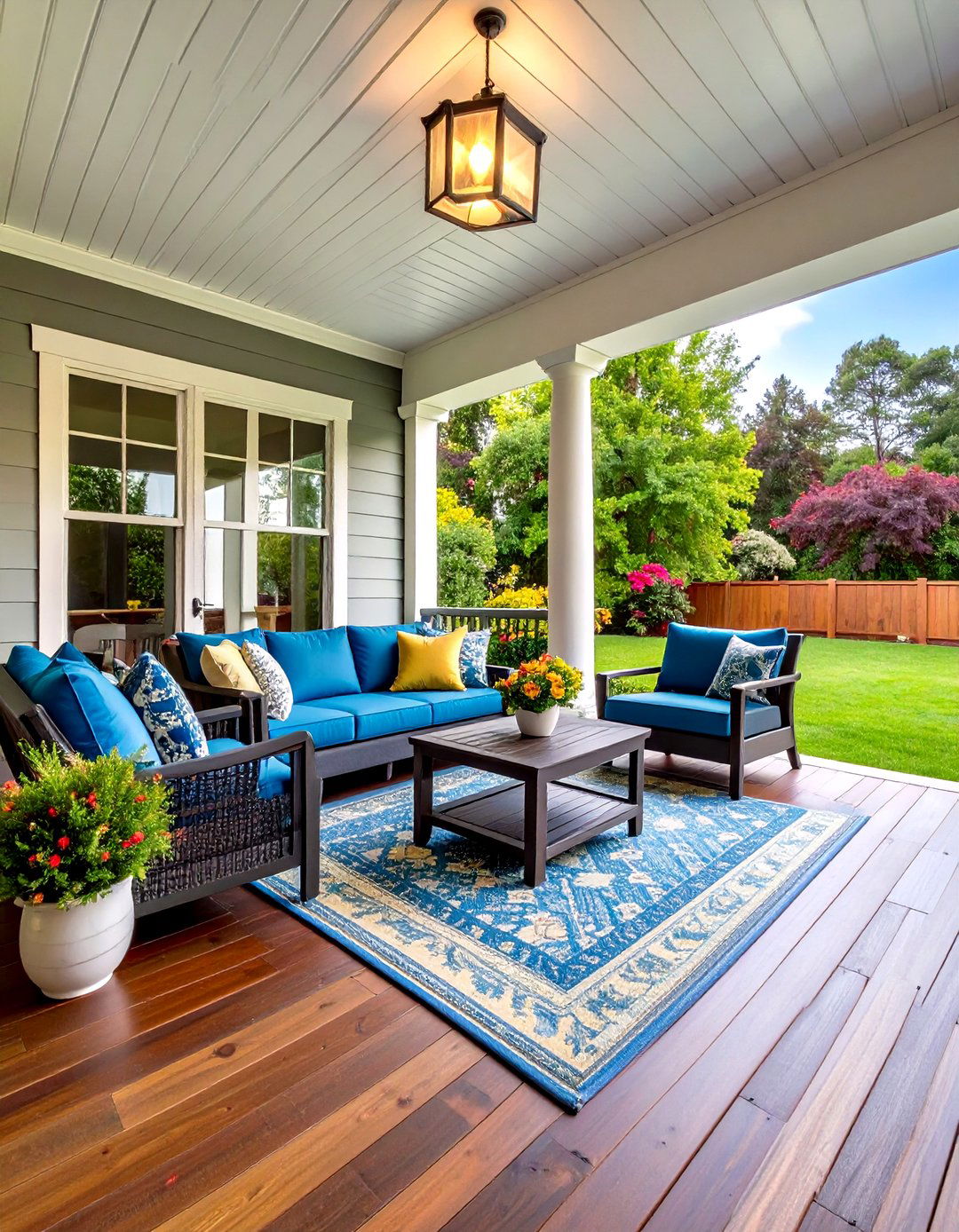
Screened-in porches see a lot of traffic and exposure to the elements, so selecting robust materials is crucial. Opt for hard-wearing deck boards like ipe or composite woods that resist moisture, rot, and staining, and choose seating outfitted with high-performance outdoor cushions wrapped in UV-resistant, mold-inhibiting fabrics. Tables with powder-coated aluminum or steel frames hold up against rust, while tempered glass or composite tabletop surfaces withstand daily use. Incorporating weather-proof area rugs and slip-resistant floor finishes adds another layer of durability. Planning for heavy use from family gatherings or pet playtime reduces long-term maintenance and keeps the porch looking fresh year after year
4. Outfit Small Spaces Accordingly
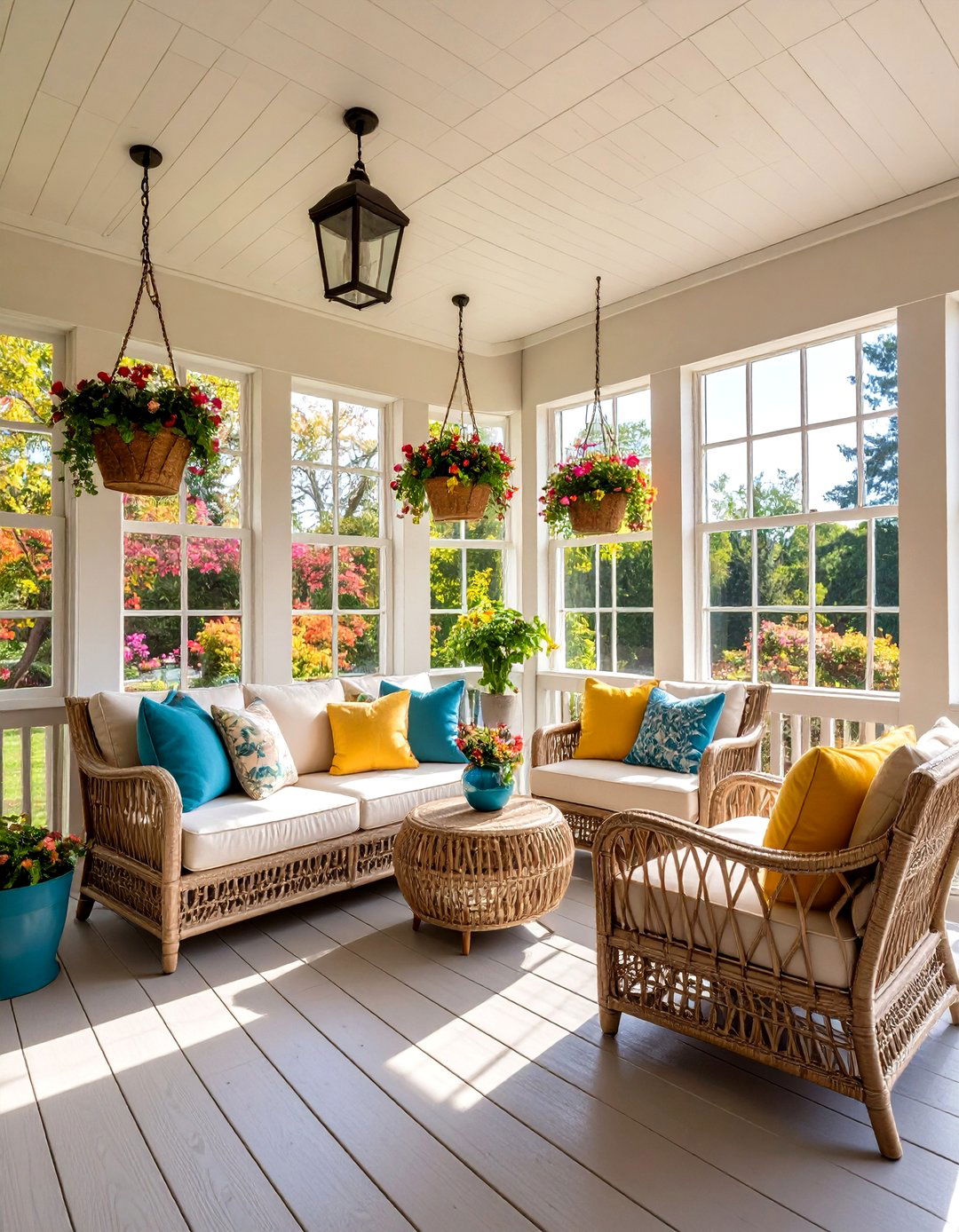
Even the tiniest screened-in porch can become a charming retreat with the right scale and style of furnishings. Choose compact furniture with slim profiles—like armless chairs, corner tables, and modular benches—to maximize walking space. A neutral color palette anchored by whites, grays, or soft beiges keeps the area from feeling cramped, while pops of color through cushions or small accent pieces add visual interest without overwhelming the eye. Vertical elements—such as hanging planters or wall-mounted lanterns—draw attention upward, making the porch feel airier. By editing down to essential pieces and sticking to a limited palette, small porches can be both functional and inviting
5. Go All Out With Rattan

Rattan furniture lends a timeless, organic aesthetic to screened-in porches, and when paired with soaring ceilings and clean architectural lines, it can evoke the elegance of classic Southern porches. Furnish with a matching rattan set—sofas, chairs, and coffee tables—and arrange symmetrically to reinforce the space’s linear flow. Since rattan weathers better under shelter than direct sun, a screened porch is the perfect environment to showcase its warm tones and textural appeal. Pair with neutral or sea-glass-blue cushions that echo painted historic ceilings, creating a cohesive look. Regular dusting and occasional recoating with clear sealer keep rattan looking fresh for years
6. Create A Natural Curtain
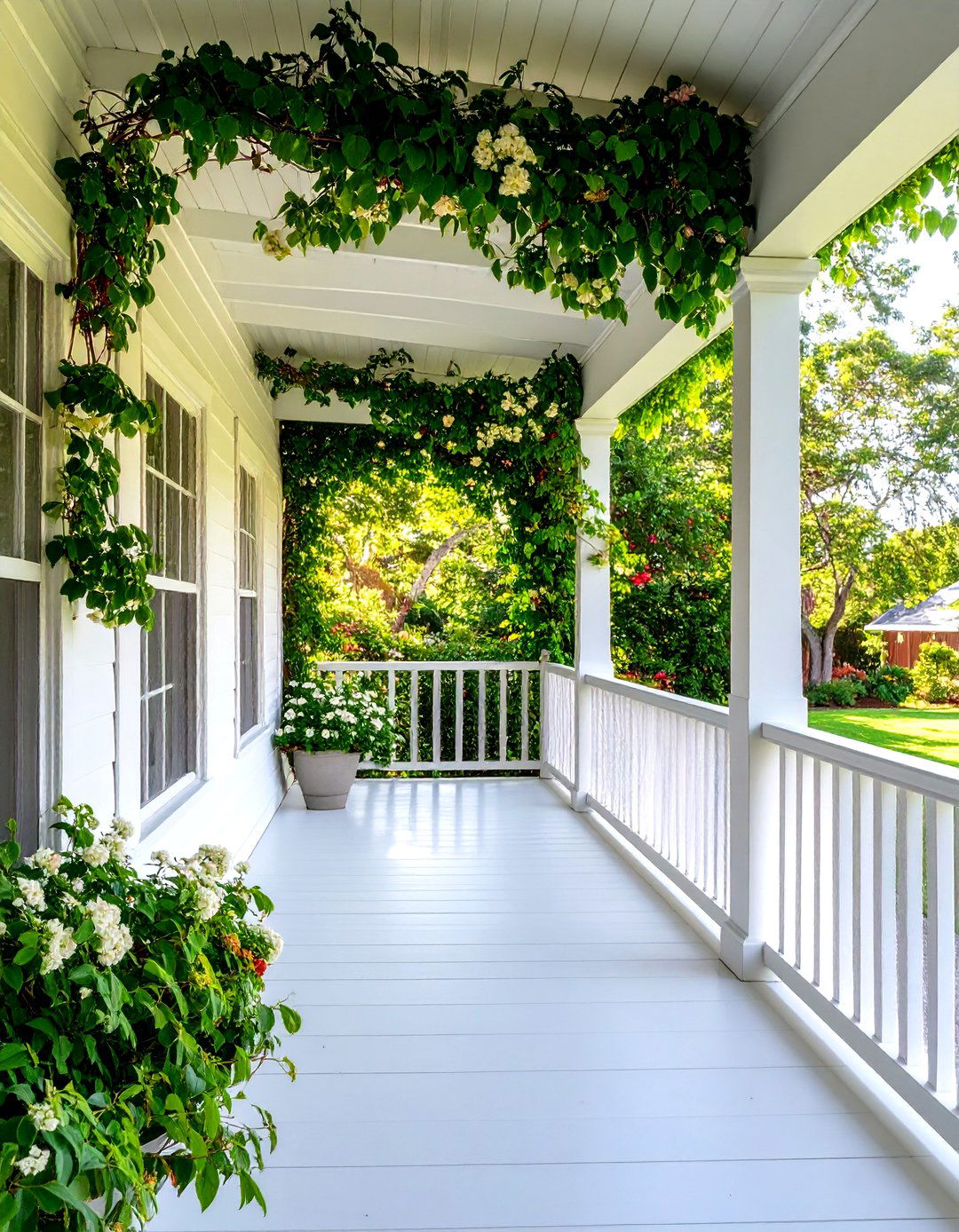
Vines trained to grow up and around porch screens can serve as a living curtain that filters light, adds seasonal color, and enhances privacy. Consider fast-growing varieties like porcelain vine (Ampelopsis brevipedunculata ‘Elegans’) for lush green foliage and colorful berries, or climbing jasmine for fragrant blooms. Install thin wires or trellises just outside the screen frame to guide growth and keep vines from pressing directly against screens. This living wall softens the boundary between indoors and out and creates a constantly evolving backdrop. Prune regularly to maintain shape and prevent spread into unwanted areas
7. Build In Furniture Flexibility

Incorporate movable seating solutions—such as backless benches, lightweight side tables, and stackable chairs—to adapt your porch layout for dining, lounging, or socializing. A built-in bench along one wall, paired with freestanding stools or ottomans, allows guests to pull up extra seating as needed. Choose weather-resistant materials like teak or powder-coated aluminum and cushions that can be stowed or swapped seasonally. Flexible furniture configurations help your porch accommodate impromptu gatherings, from quiet morning readings to lively evening parties, without feeling over-furnished
8. Don’t Fear High-End Finishes

Treat your screened porch like an interior room by incorporating polished finishes and architectural details. Checkerboard-patterned tile floors, detailed Chippendale railings, or custom-made trim can elevate the aesthetic from basic shelter to a high-style entertainment space. Adding a statement mirror above an outdoor mantel or installing glass-panel doors that mimic interior French doors blurs the line between inside and outside. While these touches require a higher initial investment, they pay off by making your porch feel like a true extension of your home’s core design
9. Add A Second Story
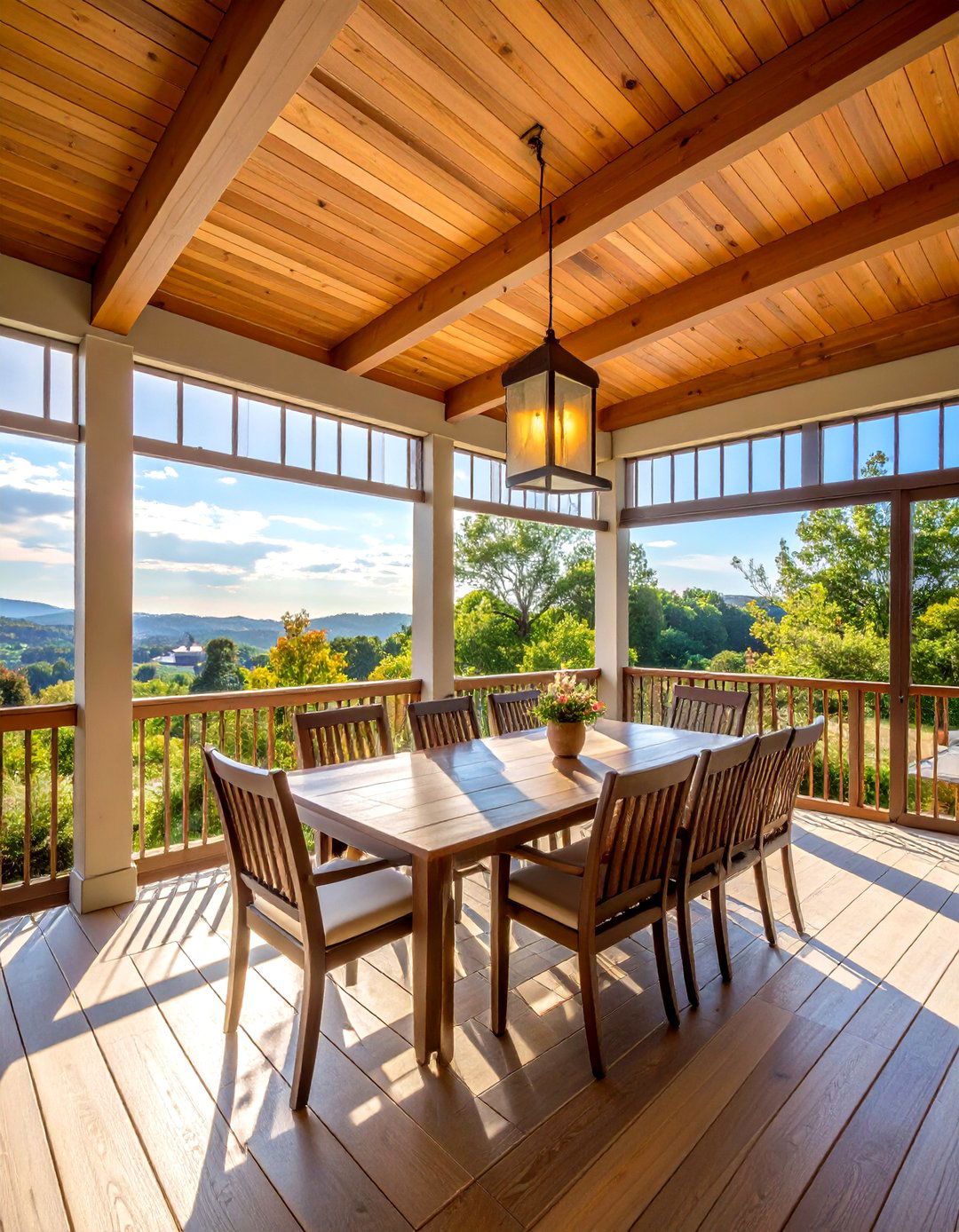
If your home’s structure allows, creating a two-story screened porch adds significant square footage and spectacle. Vertical slats or panels help draw the eye upward, emphasizing height without visual clutter. On a multi-level porch, designate the lower level for dining or family hangouts and the upper deck for intimate seating or stargazing. Ensure structural integrity with professional guidance, and choose corrosion-resistant fasteners for longevity. A second story porch becomes an architectural focal point that maximizes views and breezes
10. Opt For Extra-Deep Cushions
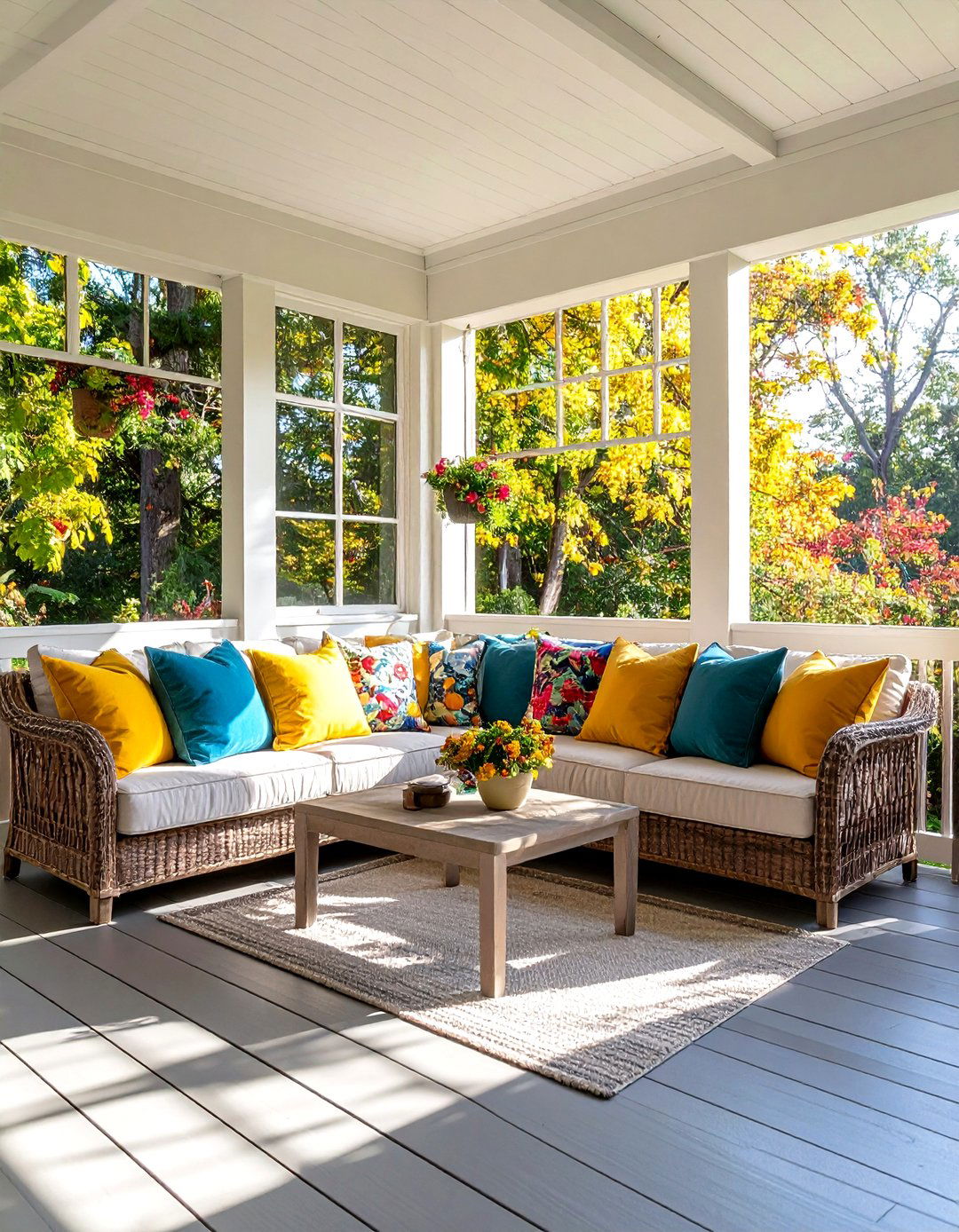
When comfort is key, prioritize generously proportioned seating outfitted with deep, plush cushions. Designers often specify cushions at least 6–8 inches thick for sofas and chairs, creating an embrace-like feel that beckons you to linger. Pair natural teak or rattan frames with water- and UV-resistant cushions wrapped in performance fabrics for easy care. Layer on patterned or textured throw pillows for visual depth and to tie in accent colors from your surrounding landscape. Deep seating becomes the porch’s signature comfort zone
11. Use an Existing Patio or Porch
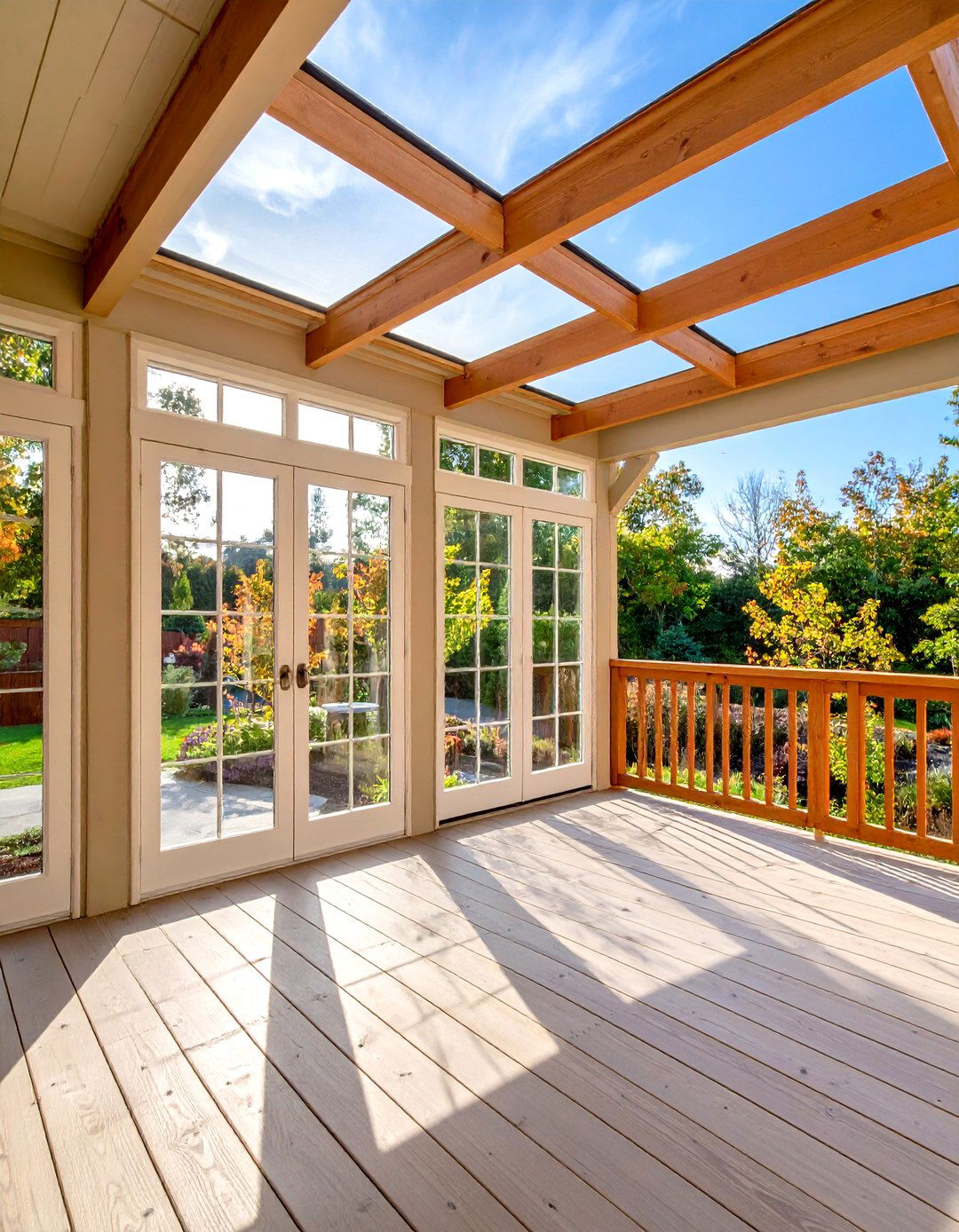
For budget-minded builds, consider screening in an existing concrete or wood patio rather than constructing a new footprint. By attaching scre en framing to your current structure, you save substantially on foundation, flooring, and framing costs—often the bulk of any addition. According to home care expert Bailey Carson, leveraging an existing porch can reduce per-square-foot expenses by bypassing excavation and structural base work. This method also minimizes disruption to landscaping and accelerates the project timeline, allowing homeowners to enjoy their new space sooner
12. Build in the Off-Season
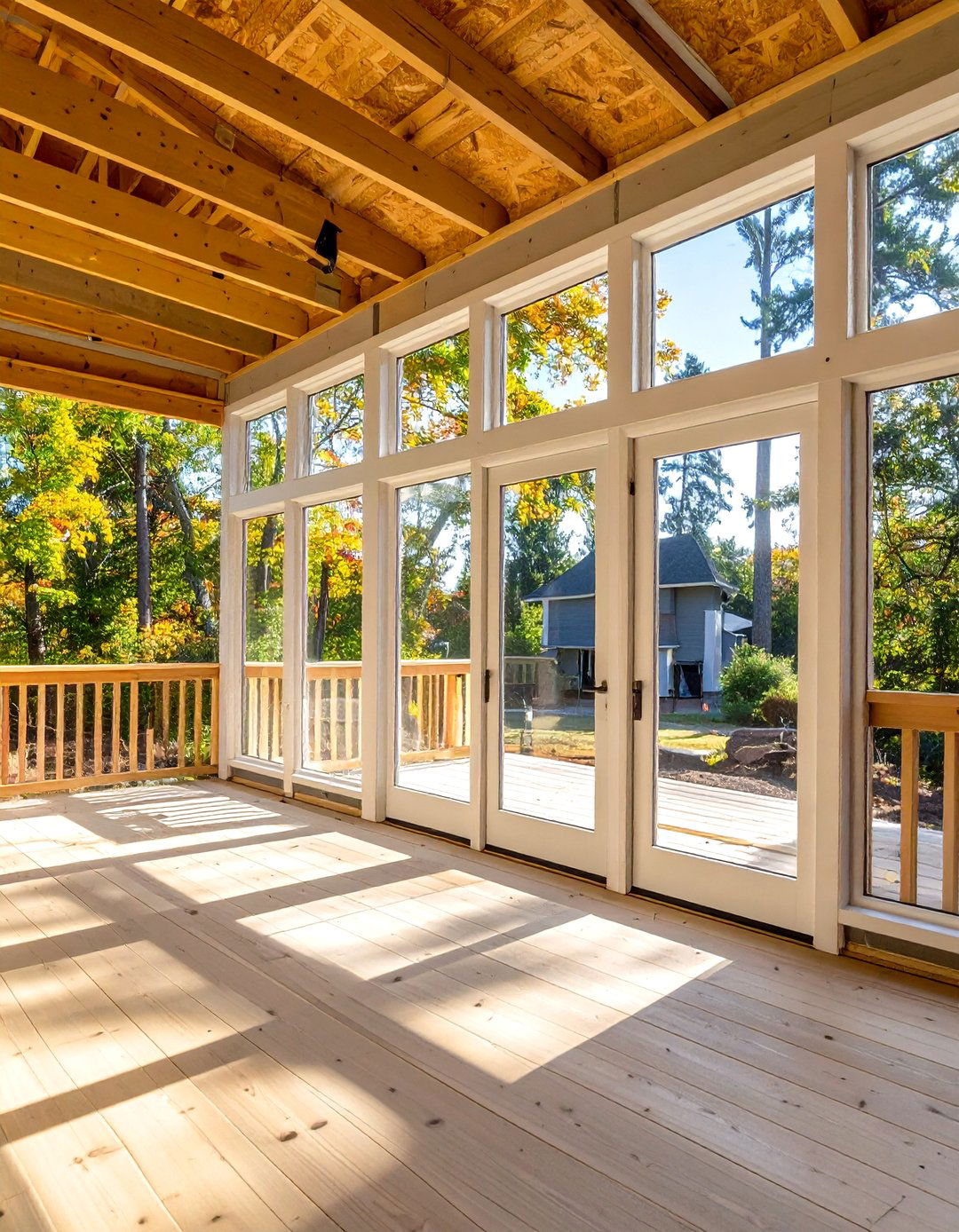
Labor and material costs tend to decrease outside peak building months, so scheduling porch construction during fall or winter can lead to significant savings. Contractors often offer discounts or more competitive bids when their workload is lighter, and material suppliers may run promotions to clear inventory. Additionally, off-season permits and inspections can be secured more quickly. By embracing flexible timelines—rather than racing for a summer finish—you can reduce overall project expenses without sacrificing design quality or functionality
13. Choose Affordable Materials

Selecting cost-effective, durable materials helps keep porch budgets in check. Instead of pricier hardwoods or tile, consider aluminum or fiberglass screening systems paired with concrete slab or stamped concrete flooring, which can deliver a polished look for under $3,000 total. Steel or composite decking boards offer longevity without the maintenance of tropical hardwoods. When shopping for screens, fiberglass mesh is a wallet-friendly choice that remains easy to replace if damaged. Smart material selections balance aesthetics, performance, and price for lasting value
14. Downsize and Keep It Simple
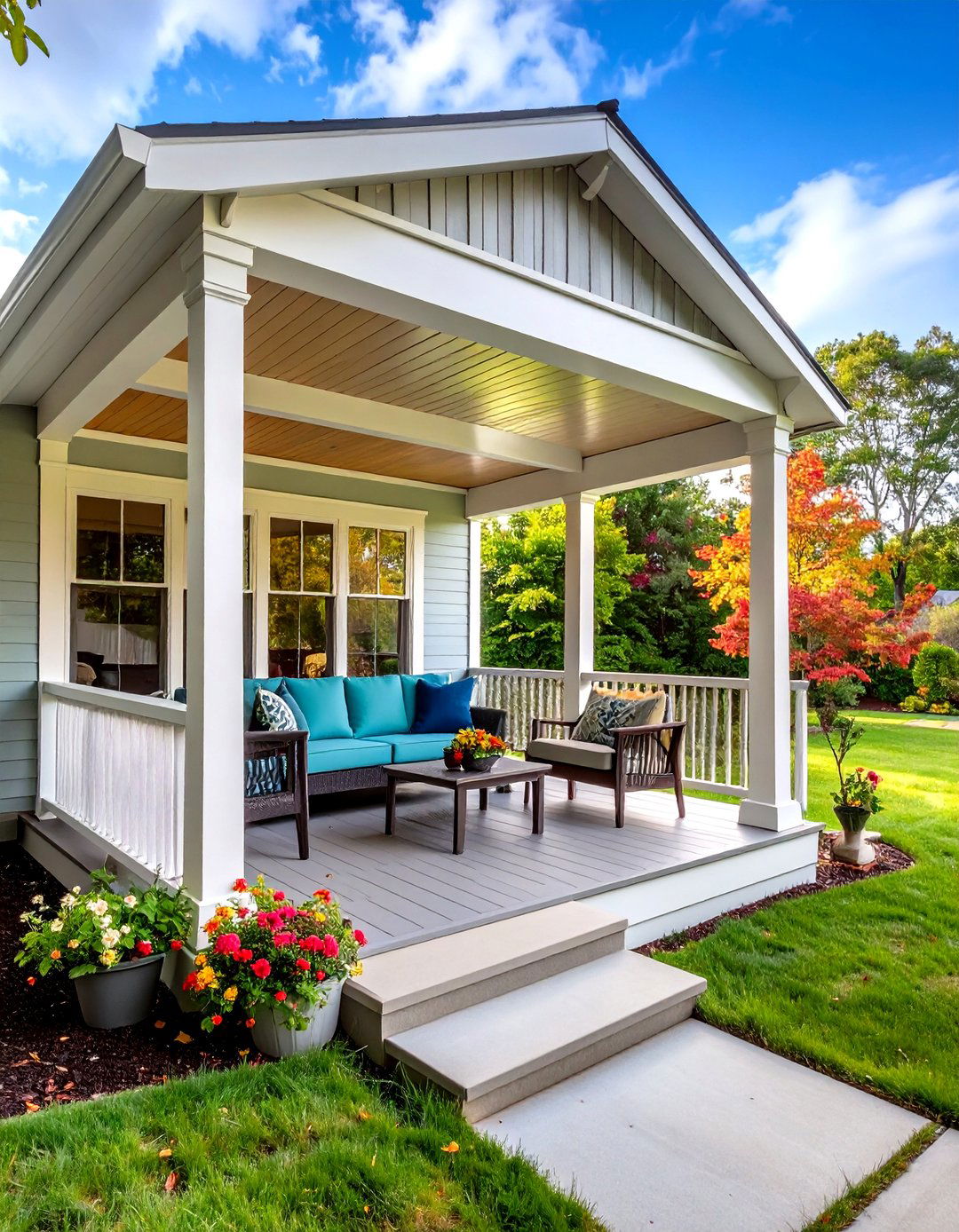
A smaller porch footprint reduces framing, materials, and labor costs, making it a savvy design choice for tight budgets. Focus on the features you’ll use most—whether that’s a dining area, a seating nook, or a hammock spot—and omit underutilized extras that drive up expenses. Simplified rooflines, minimal decorative trim, and a straightforward porch layout streamline construction. Reserve your budget for high-impact elements like screened panels, quality hardware, or a standout light fixture, rather than extensive square footage
15. DIY When Possible
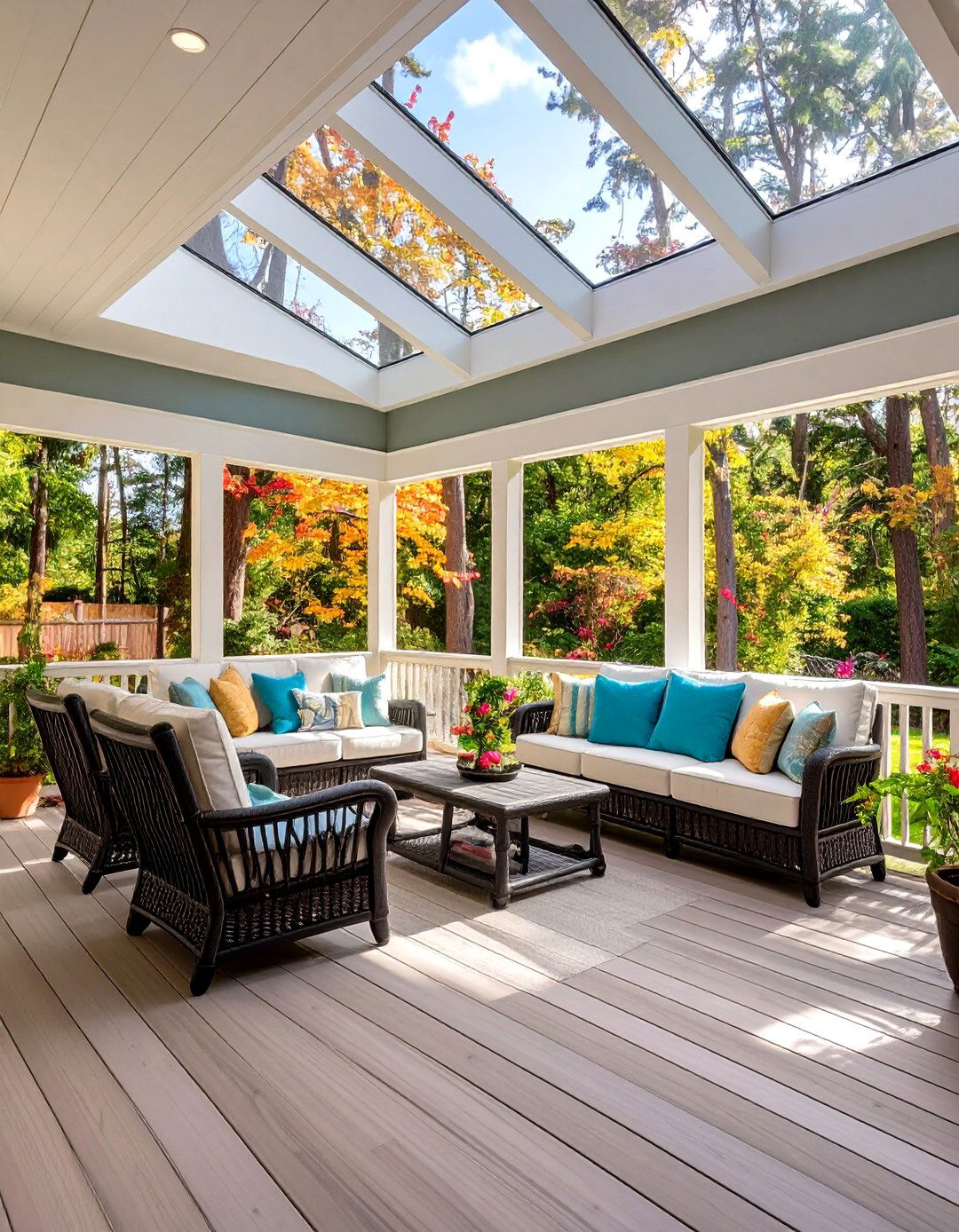
Homeowners with carpentry skills can substantially lower labor costs by completing elements of their screened-in porch themselves. Installing screen frames, painting trim, and assembling furniture are tasks suited for the ambitious DIYer. Labor can run upwards of $60 per hour, so tackling simpler tasks—like hanging insect screens or staining boards—can yield savings of $2 or more per square foot. However, leave critical structural or electrical work to licensed professionals to ensure safety and code compliance
16. Incorporate Indoor-Outdoor Rugs and Weather-Resistant Textiles
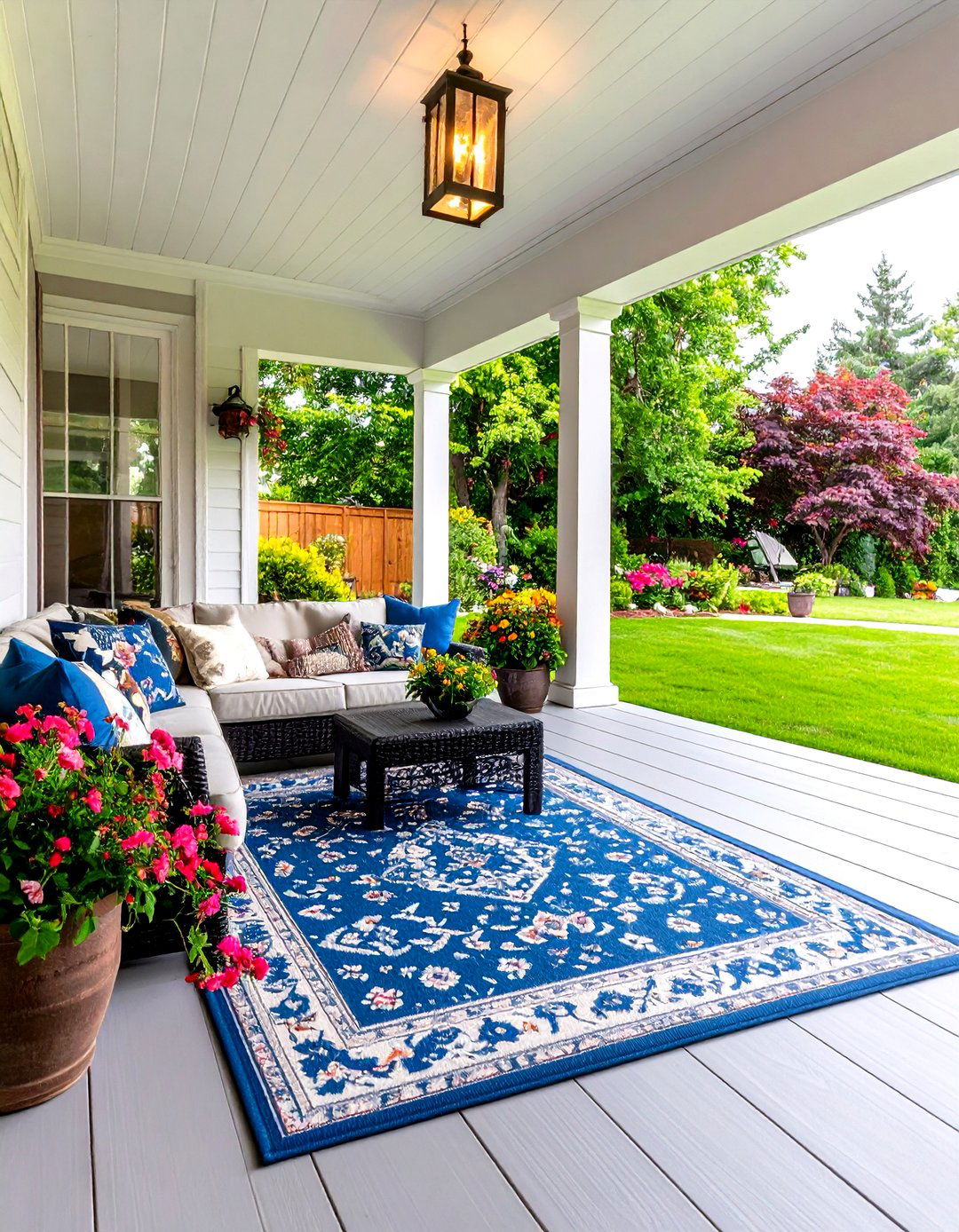
Anchoring a screened porch with an indoor-outdoor rug instantly defines seating or dining zones while adding warmth underfoot. Rugs made from polypropylene withstand moisture, mold, and UV exposure, keeping their color and texture season after season. Pair these with weather-resistant throw pillows and plush outdoor blankets to extend use into cooler evenings. Soft textiles balance harder surfaces and introduce layers of comfort, transforming the porch into an inviting living room extension
17. Add Vibrant Planters and Hanging Baskets
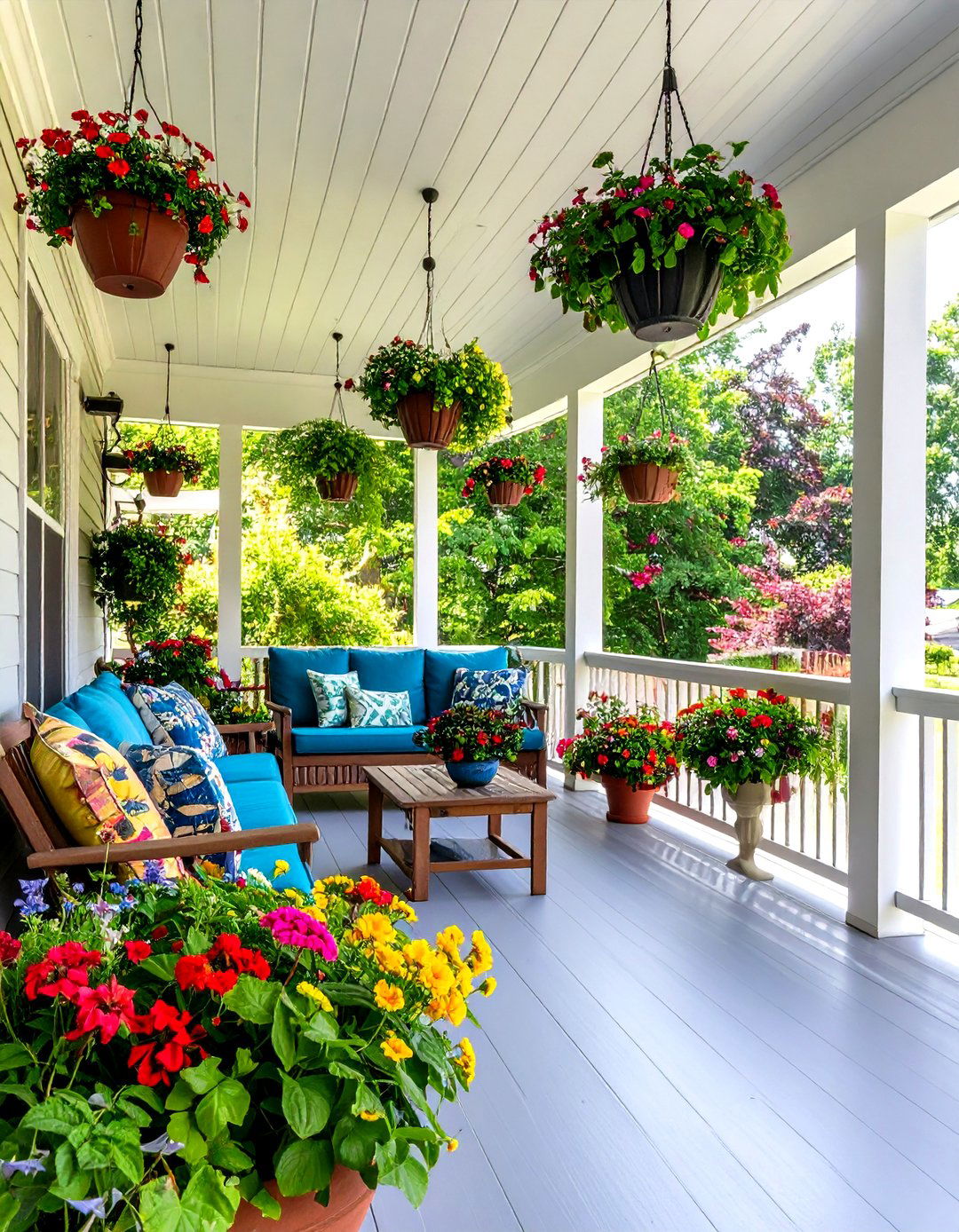
Bringing greenery into your screened porch through colorful potted plants and hanging baskets enlivens the space and connects you to the outdoors. Arrange large containers of ferns, ornamental grasses, or dwarf citrus trees in corners to frame seating areas. Suspend flower baskets or herb pots at varying heights to draw the eye upward. Choose lightweight containers and saucers for easy rearrangement, and incorporate trailing vines to soften structural elements. Strategic greenery enhances privacy and infuses life into the design
18. Use Wicker Furniture and Sisal Rugs for Texture
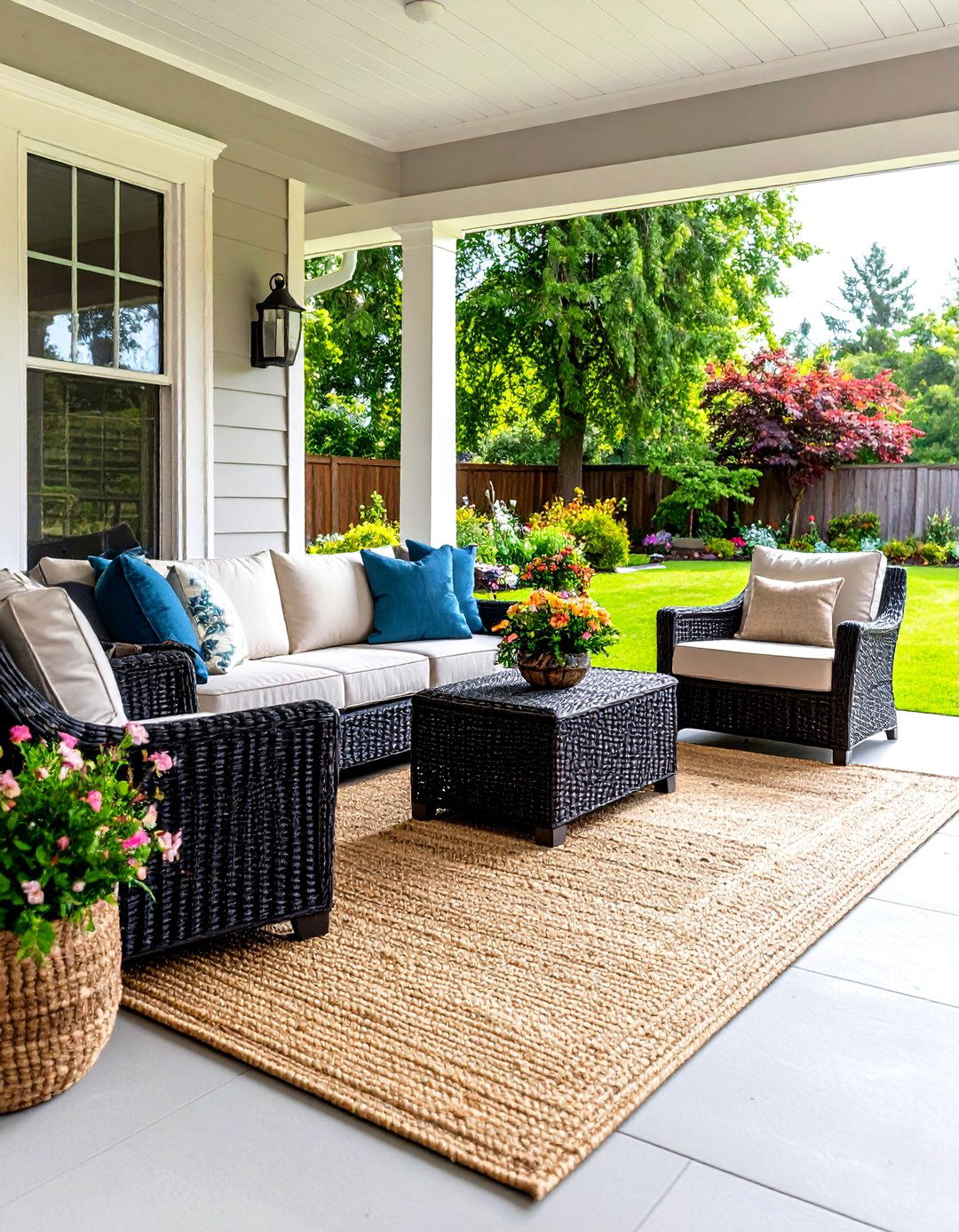
Timeless wicker seating coupled with a natural sisal or jute rug adds an organic textural layer to any screened porch. Wicker frames in neutral hues echo surrounding foliage, while sisal rugs deliver a rugged, beachy vibe underfoot. Both materials pair beautifully with sun- and water-resistant cushion fabrics in coastal blues or botanical greens. This combination creates a harmonious backdrop that feels simultaneously relaxed and refined, bridging the gap between indoor polish and outdoor ruggedness
19. Decorate Like an Indoor Room

Treat your screened porch decor choices as seriously as you would an indoor living room. Start with a cohesive color scheme, introduce an area rug to anchor furniture groupings, and hang sheer curtains on either side of the screens for movement and softness. A statement light fixture—such as a lantern-style pendant—elevates the ceiling plane, while wall art or outdoor-rated mirrors reflect light and expand the visual field. Layer decorative accessories—throw pillows, sculptural vases, or stackable side tables—to create a polished, home-like ambiance
20. Embrace Floral Prints and Natural Elements
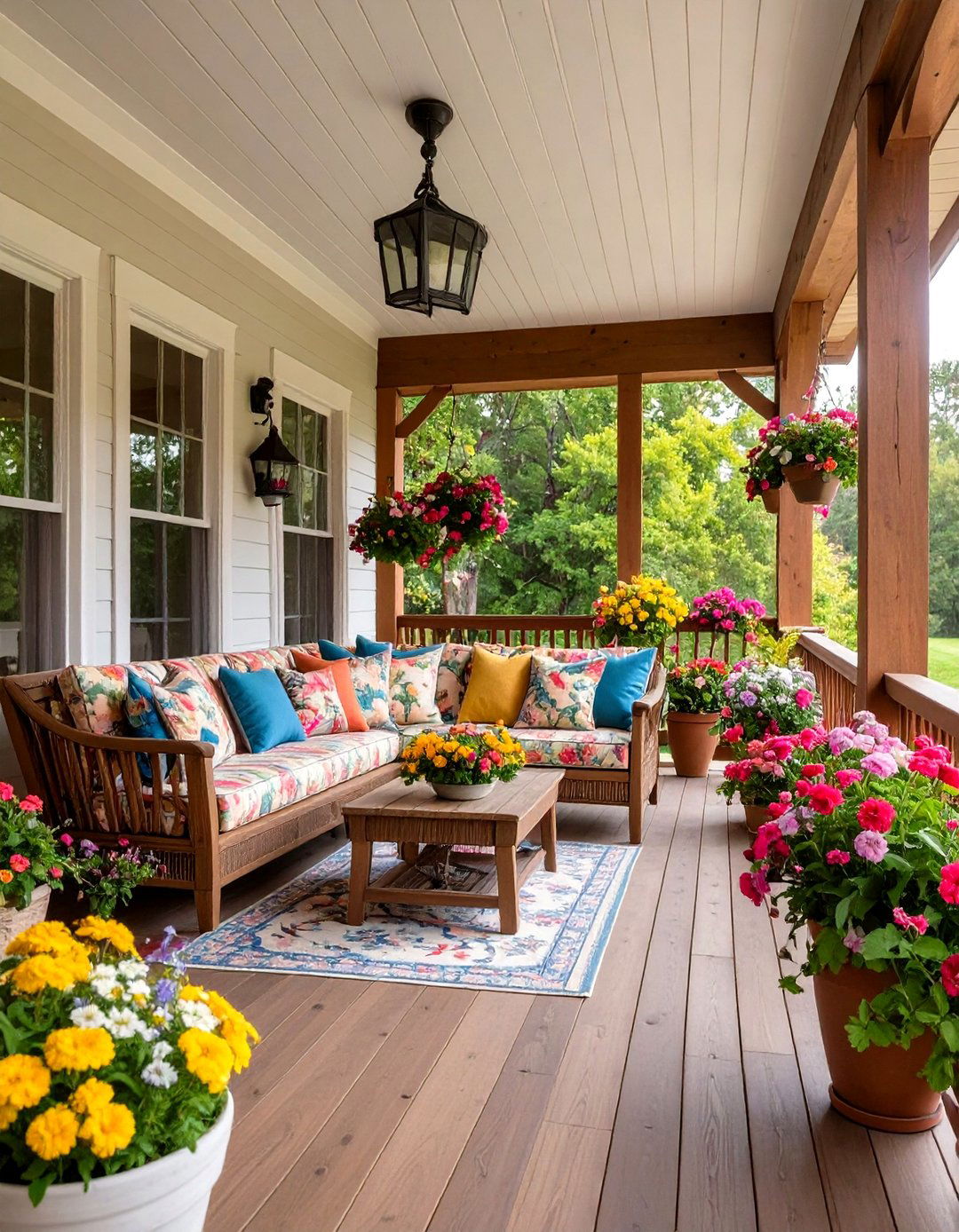
Integrate floral upholstery prints, live potted blooms, and natural-wood accents to blur the lines between indoor comforts and outdoor freshness. Upholstered seating in miniature floral patterns provides visual interest without overwhelming, while side tables crafted from reclaimed teak or driftwood add authenticity. Incorporate real or faux flower arrangements in weather-resistant containers to introduce seasonal color. This floral approach nurtures a sense of serenity and connection to nature, making your porch a welcoming haven for morning coffee or evening cocktails
Conclusion:
These twenty screened-in porch ideas illustrate the wide spectrum of possibilities for creating comfortable, functional, and visually engaging outdoor living spaces. From flexible retractable screening systems and high-end architectural details to savvy budget builds and textural décor accents, each concept adapts to varied climates, budgets, and personal styles. Whether you’re seeking a cozy reading nook, a vibrant gathering spot, or an all-season entertainment area, these strategies will help you craft a porch that feels like a true extension of your home—inviting you to relax, entertain, and enjoy the beauty of the outdoors without the nuisance of bugs or the elements.


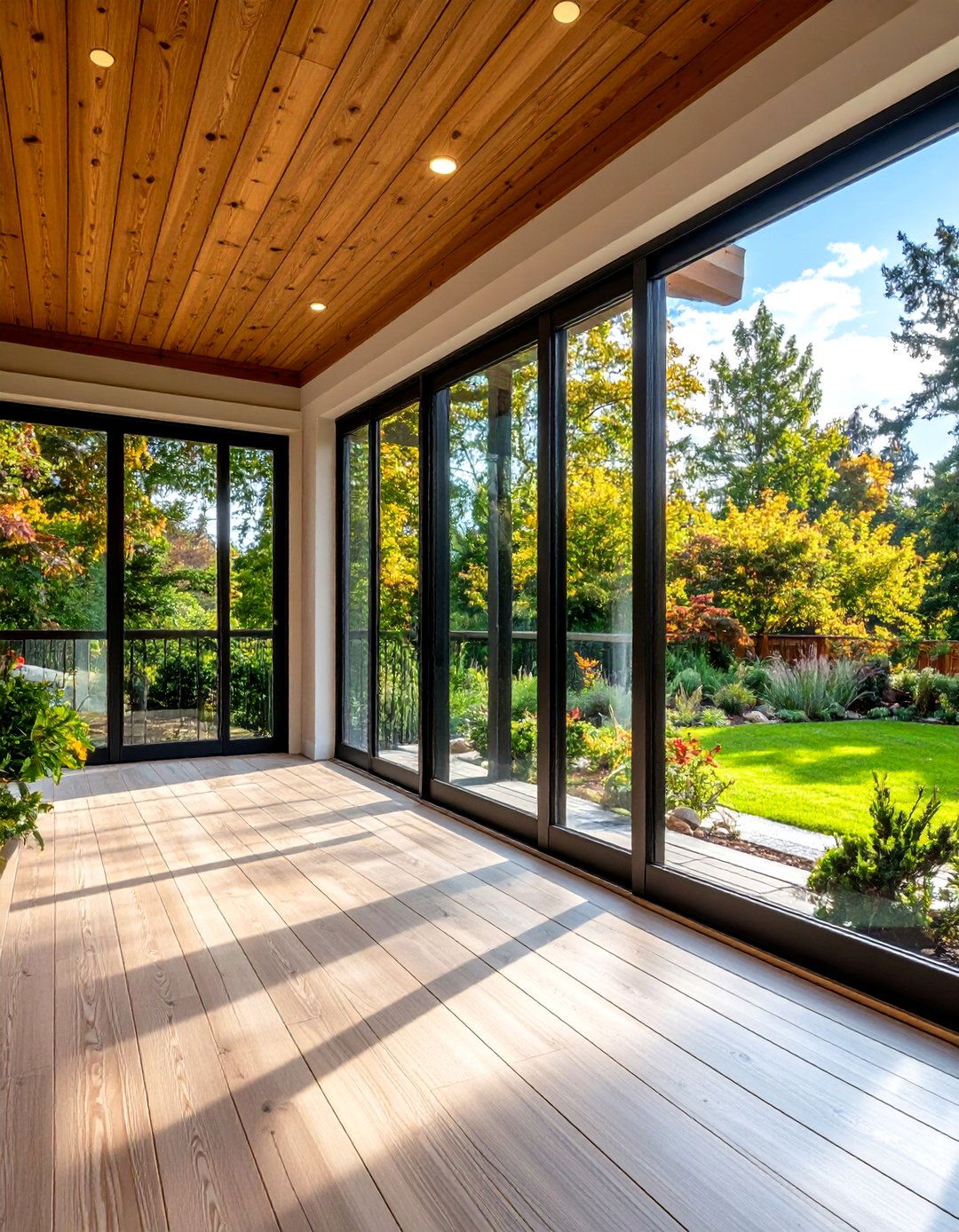
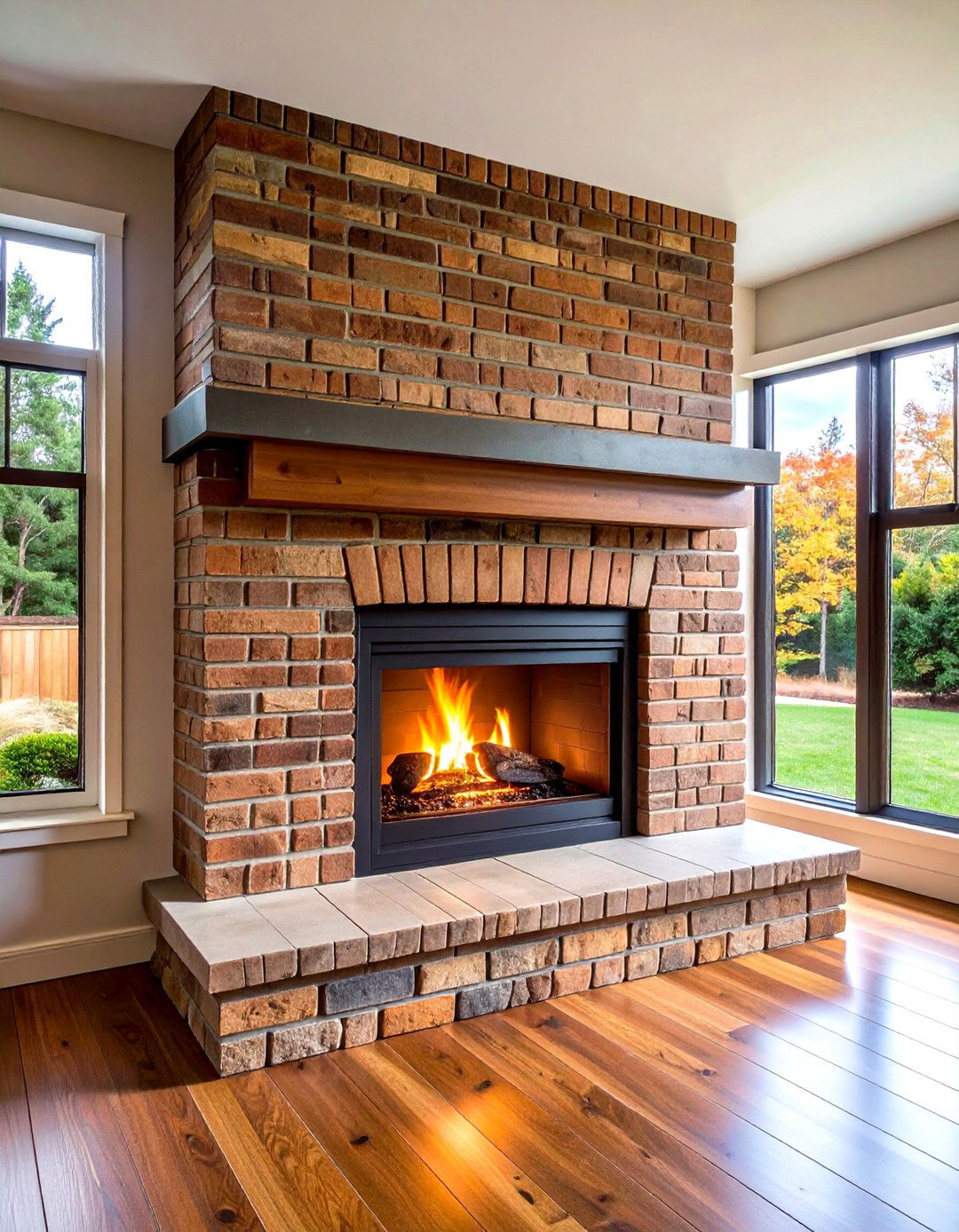

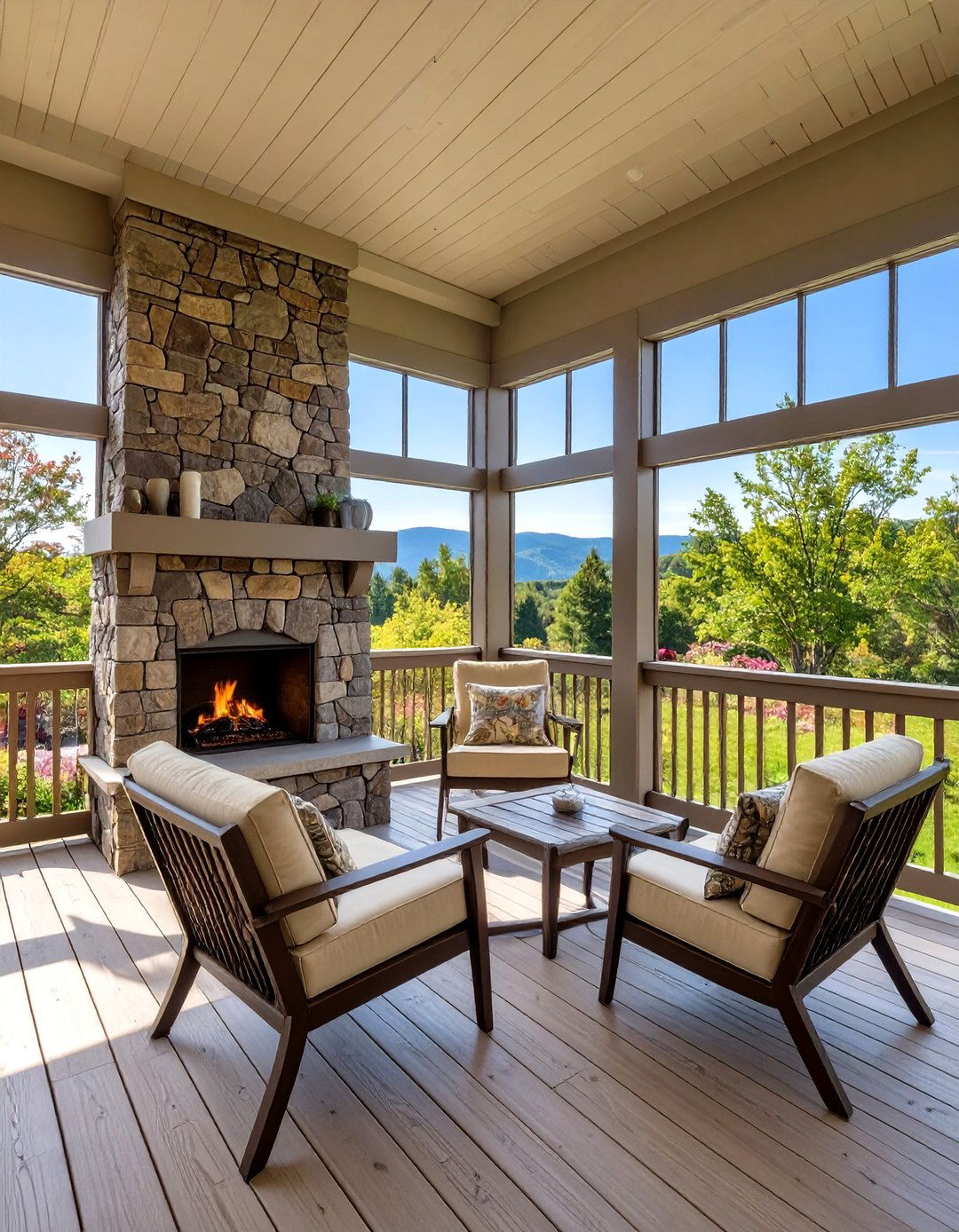

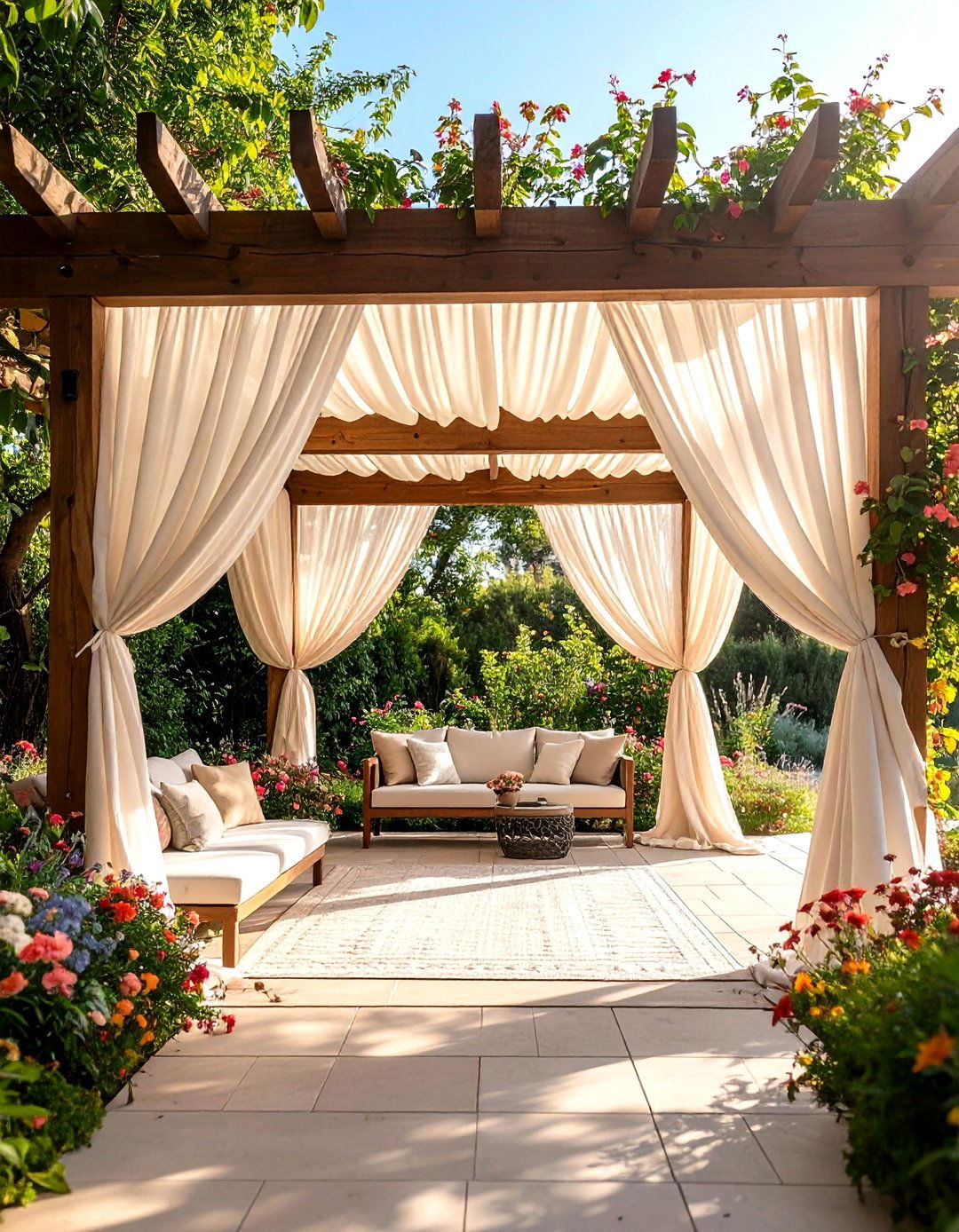

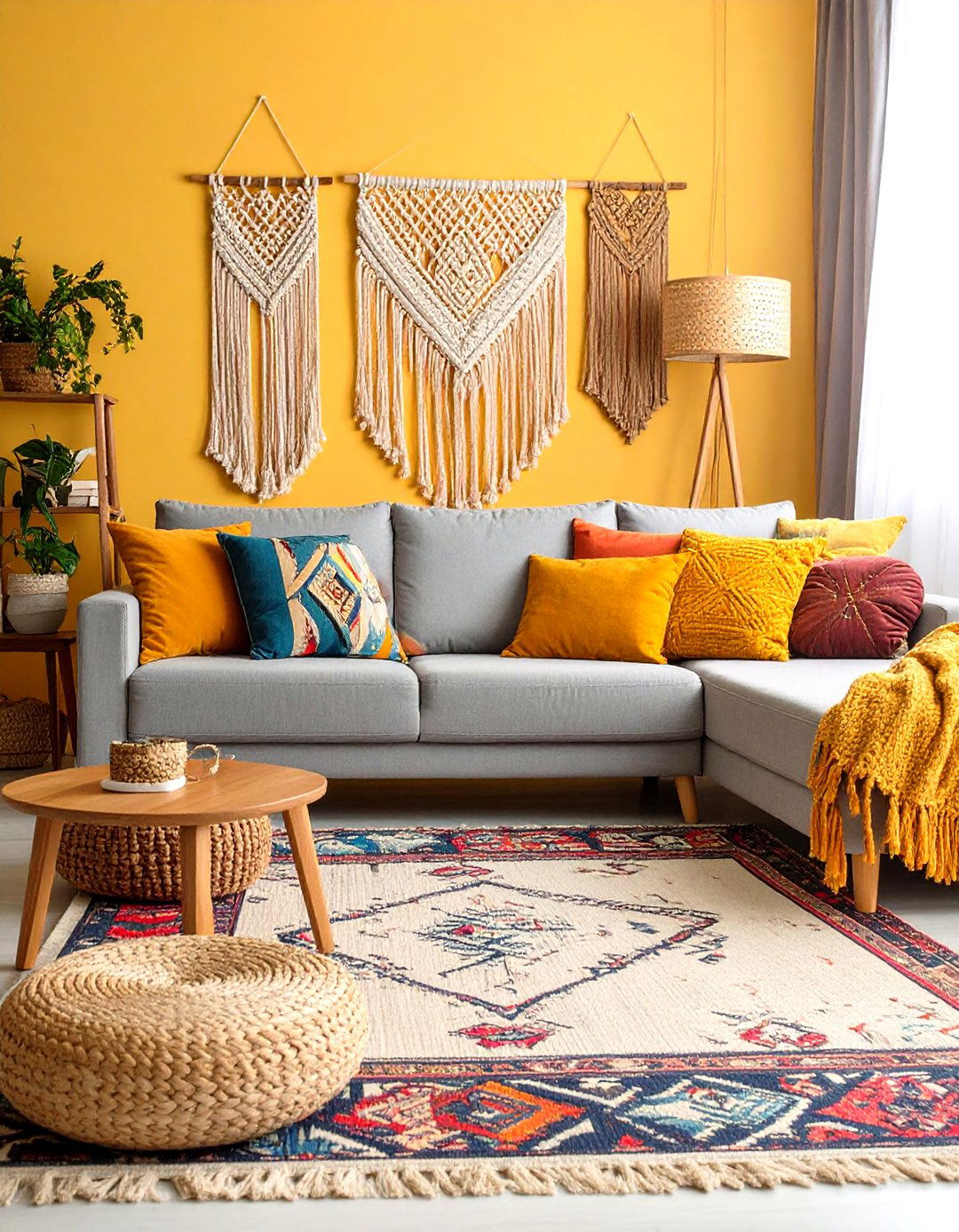



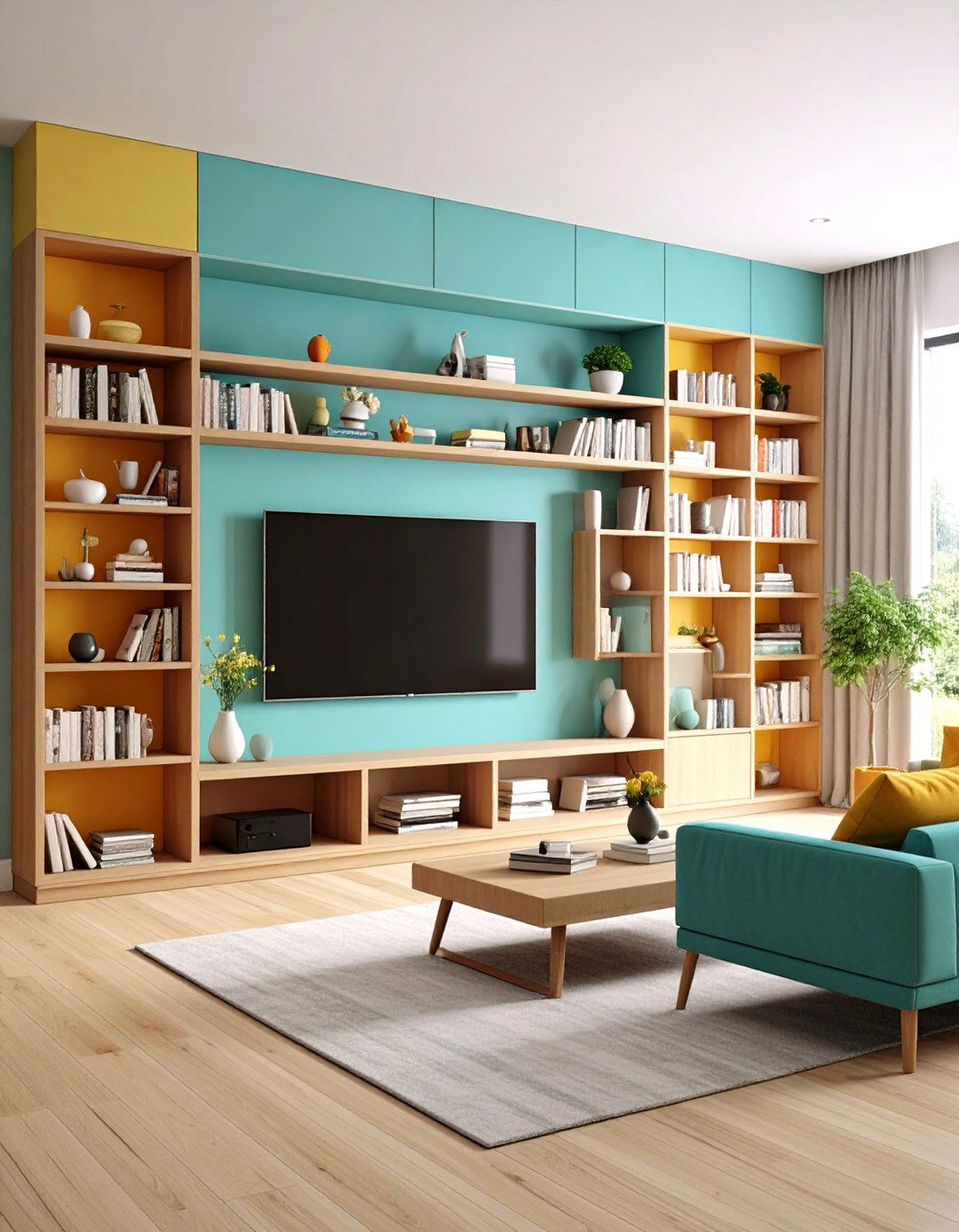
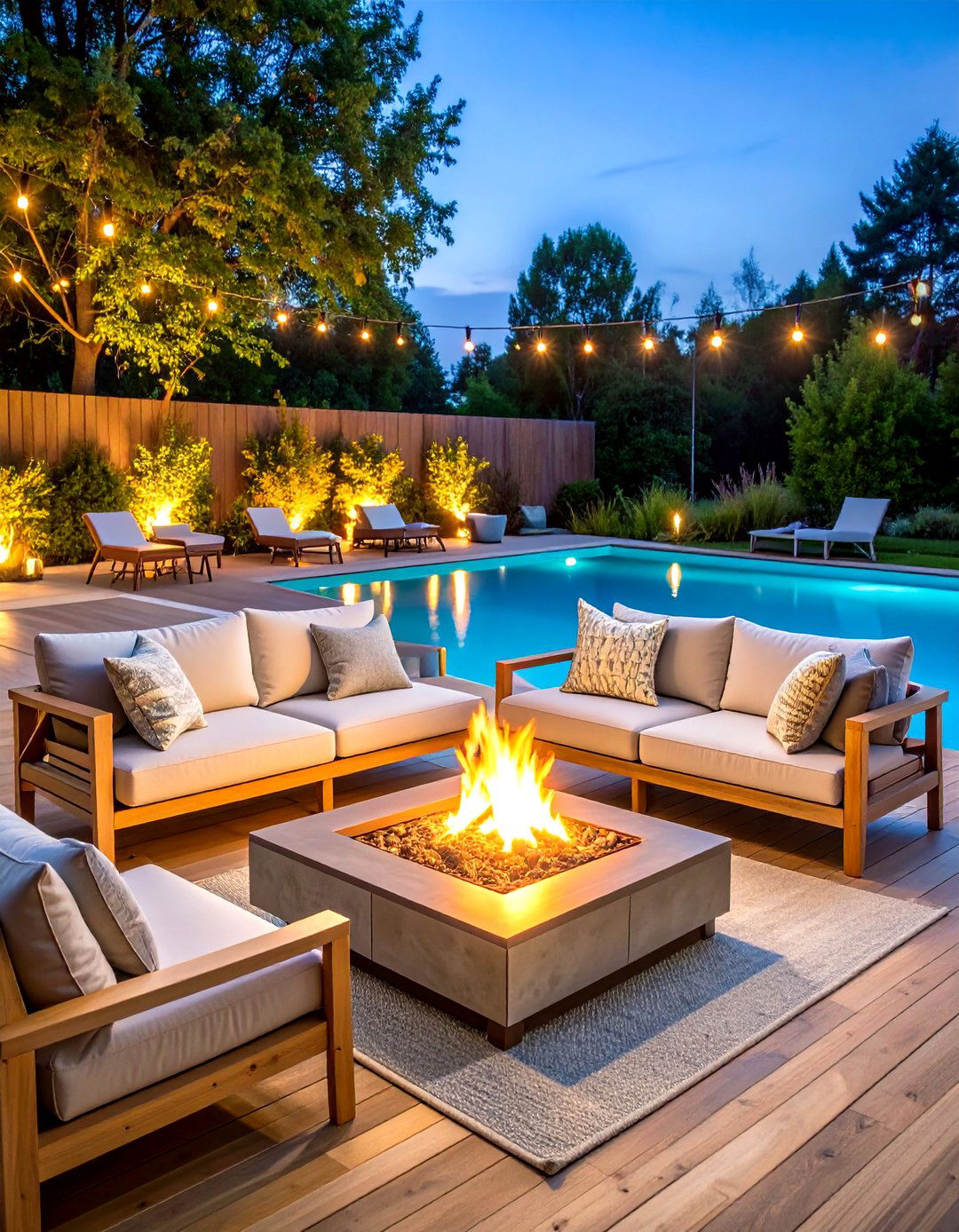
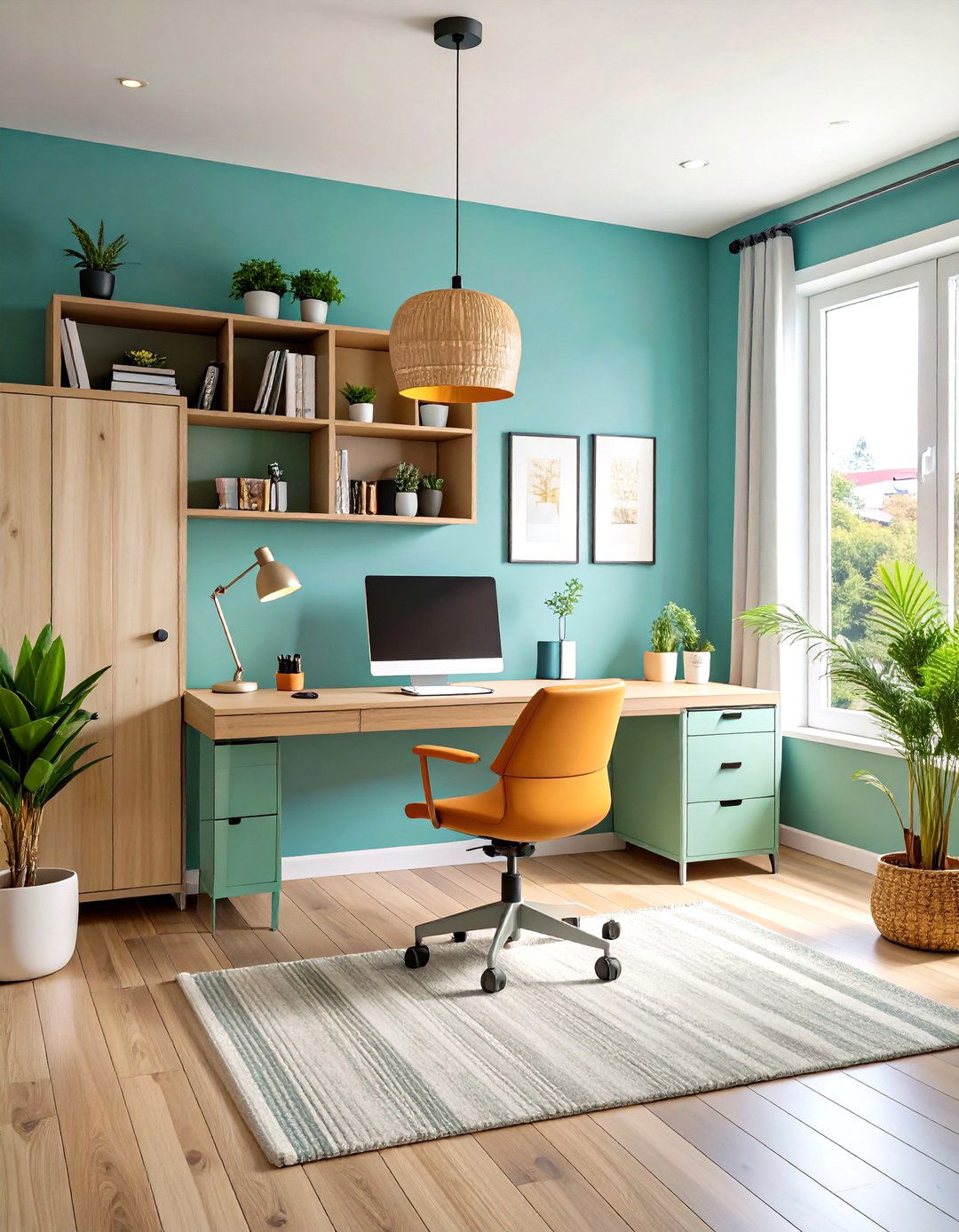
Leave a Reply